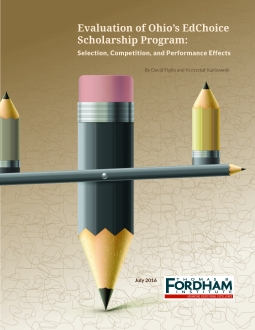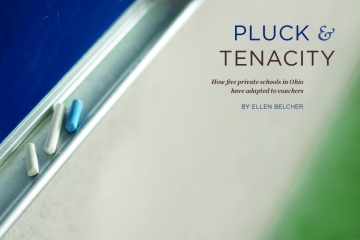Shortly after Ohio lawmakers enacted a new voucher program in 2005, the state budget office wrote in its fiscal analysis, “The Educational Choice Scholarships are not only intended to offer another route for student success, but also to impel the administration and teaching staff of a failing school building to improve upon their students’ academic performance.” Today, the EdChoice Scholarship Program provides publicly funded vouchers to more than eighteen thousand Buckeye students who were previously assigned to some of the state’s lowest-performing schools, located primarily in low-income urban communities. Yet remarkably little else is known about the program.
Which children are using EdChoice when given the opportunity? Is the initiative faithfully working as its founders intended? Are participating students blossoming academically in their private schools of choice? Does the increased competition associated with EdChoice lead to improvements in the public schools that these kids left?
Fordham’s new study utilizes longitudinal student data from 2003–04 to 2012–13 to answer these and other important questions.
Three key findings:
- Student selection: The students participating in EdChoice are overwhelmingly low-income and minority children. But relative to pupils who are eligible for vouchers but choose not to use them, the participants in EdChoice are somewhat higher-achieving and less economically disadvantaged.
- Competitive effects: EdChoice modestly improved the achievement of the public-school students who were eligible for a voucher but did not use it. The competition associated with the introduction of EdChoice appears to have spurred these public-school improvements.
- Participant effects: The students who used vouchers to attend private schools fared worse on state exams compared to their closely matched peers remaining in public schools. Only voucher students assigned to relatively high-performing EdChoice eligible public schools could be credibly studied.
Dr. David Figlio, Orrington Lunt Professor of Education and Social Policy and of Economics at Northwestern University, led the research.




